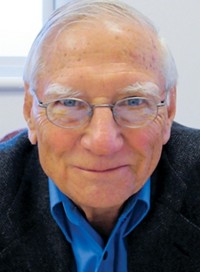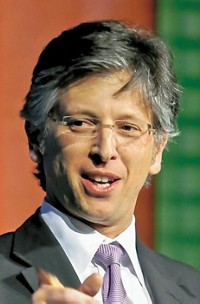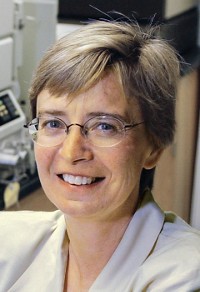Advertisement
Grab your lab coat. Let's get started
Welcome!
Welcome!
Create an account below to get 6 C&EN articles per month, receive newsletters and more - all free.
It seems this is your first time logging in online. Please enter the following information to continue.
As an ACS member you automatically get access to this site. All we need is few more details to create your reading experience.
Not you? Sign in with a different account.
Not you? Sign in with a different account.
ERROR 1
ERROR 1
ERROR 2
ERROR 2
ERROR 2
ERROR 2
ERROR 2
Password and Confirm password must match.
If you have an ACS member number, please enter it here so we can link this account to your membership. (optional)
ERROR 2
ACS values your privacy. By submitting your information, you are gaining access to C&EN and subscribing to our weekly newsletter. We use the information you provide to make your reading experience better, and we will never sell your data to third party members.
Environment
Frank H. Field & Joe L. Franklin Award For Outstanding Achievement In Mass Spectrometry
by Ann M. Thayer
January 26, 2015
| A version of this story appeared in
Volume 93, Issue 4

Sponsored by Waters Corp.
Hilkka I. Kenttämaa works at the interface of analytical and physical organic chemistry and is highly respected in both worlds, her colleagues say. As a professor at Purdue University, she has focused on studying the reactivity of distonic radical cations. To do so, she has developed methods to make these reactive species, as well as mass spectrometry techniques to observe their interactions with large molecules.
Kenttämaa’s desire to draw on different disciplines emerged while she was a university student. Although both parents were chemists, she intended to study mathematics in her native Finland. However, she explored different areas of science and eventually “drifted into chemistry,” she says, finding a combination of theory and practicality very appealing.
“I love reaction mechanisms and I love solving problems,” which makes a blend of analytical and organic chemistry “absolutely perfect,” Kenttämaa says. And in what she considers an added bonus, her chosen field also allows her to connect to real-world problems.
“I find it is really rewarding to solve important industrial problems and to interact with industrial chemists,” she says. Today, many of these chemists are former students who developed a similar enthusiasm after spending time in her large research group. She collaborates with both major oil and pharmaceutical companies.
In the early 1980s when Kenttämaa first came to the U.S. to do research, the existence of distonic radical cations—ions in which the charge and radical sites are separated—had only recently been reported. “I just found them really fascinating,” she says. “At that point they were just a curiosity, but I started designing ways of actually making them, instead of just observing them, and exploring their chemical properties.”
Kenttämaa’s pioneering studies of distonic radical cations, as well as her groundbreaking development of laser-induced acoustic desorption (LIAD), have had major impacts across many areas, according to University of Colorado chemistry professor Veronica M. Bierbaum.
In physical organic chemistry, Kenttämaa’s research has improved the understanding of the reactivity of mono- and polyradicals, such as bi-, tri-, and tetraradicals. Likewise, organic synthesis has benefited through a greater ability to control the outcome of radical reactions. And her methods have helped reveal the mechanisms of radical-induced damage to biopolymers, such as DNA.
Meanwhile, the development of novel LIAD mass spectrometry research tools has found application much beyond her own work. LIAD allows for the evaporation of biopolymers and hydrocarbons as neutral, unfragmented molecules into mass spectrometers for fundamental ion-molecule reaction studies. In particular, the achievement has had a profound impact on the petroleum industry’s ability to study complex mixtures of nonvolatile hydrocarbon mixtures.
Not surprisingly, Kenttämaa is a member of both the ACS Divisions of Analytical Chemistry and of Organic Chemistry and has been on the editorial boards of journals in both fields. She is a member of the Finnish Chemical Society and has served on the board of directors of the American Society for Mass Spectrometry.
Kenttämaa received her bachelor’s, master’s, and doctoral degrees in organic chemistry from the University of Helsinki. After finishing her postdoctoral appointment at Purdue, she joined the faculty in 1989. Kenttämaa was named to the Finnish Academy of Science & Letters in 2004.
Kenttämaa will present her award address before the Division of Analytical Chemistry.





Join the conversation
Contact the reporter
Submit a Letter to the Editor for publication
Engage with us on Twitter